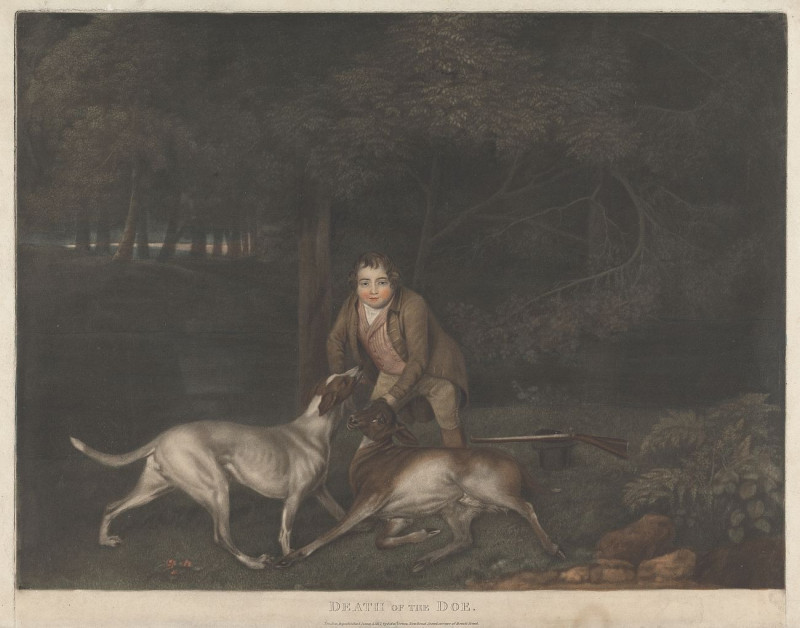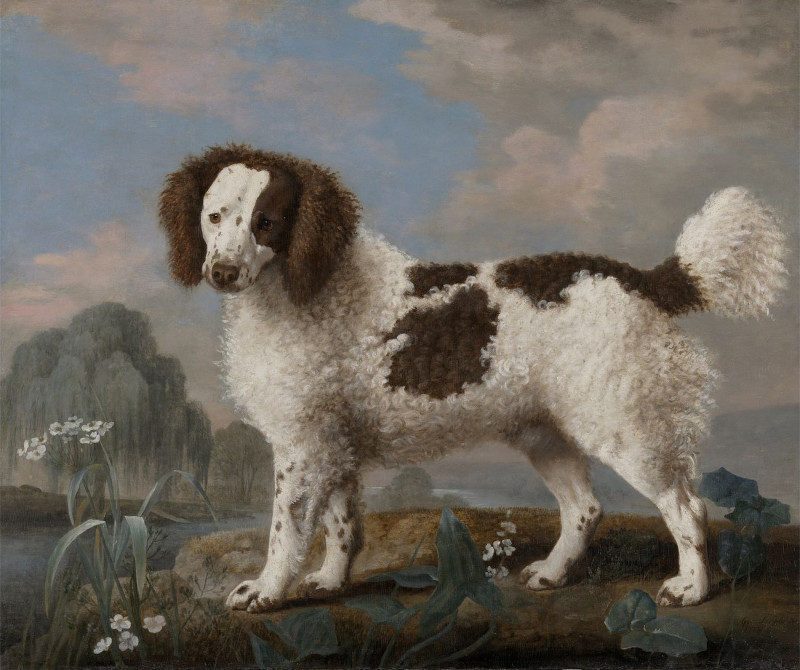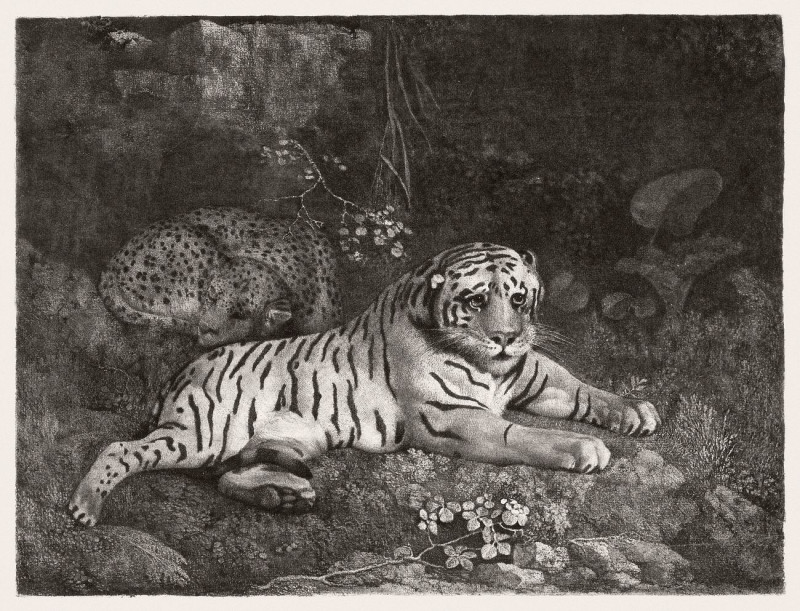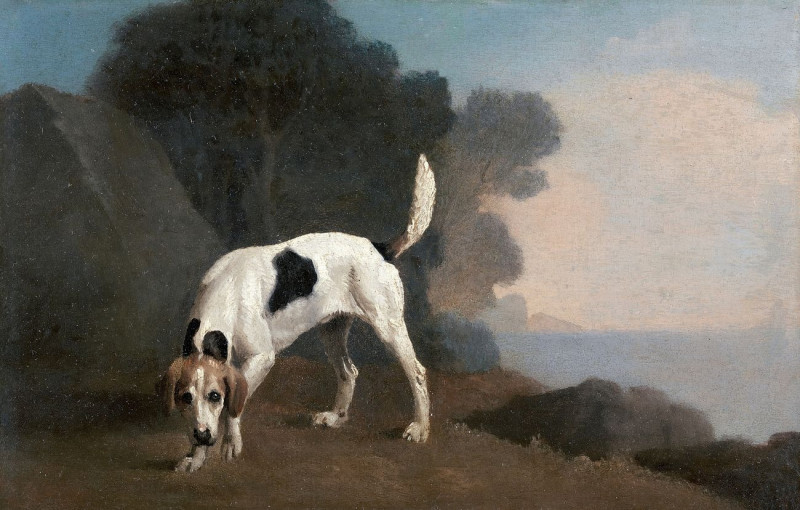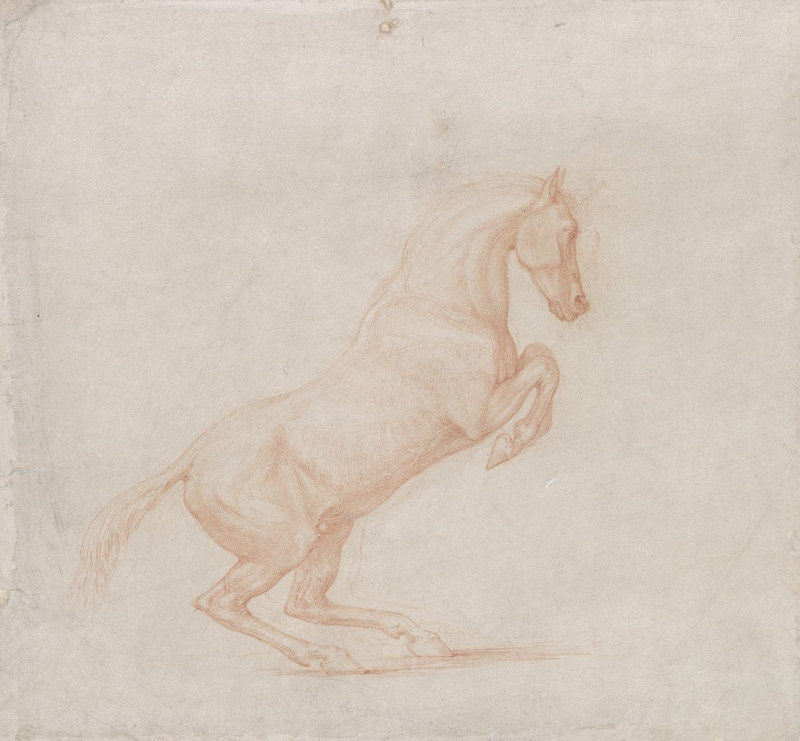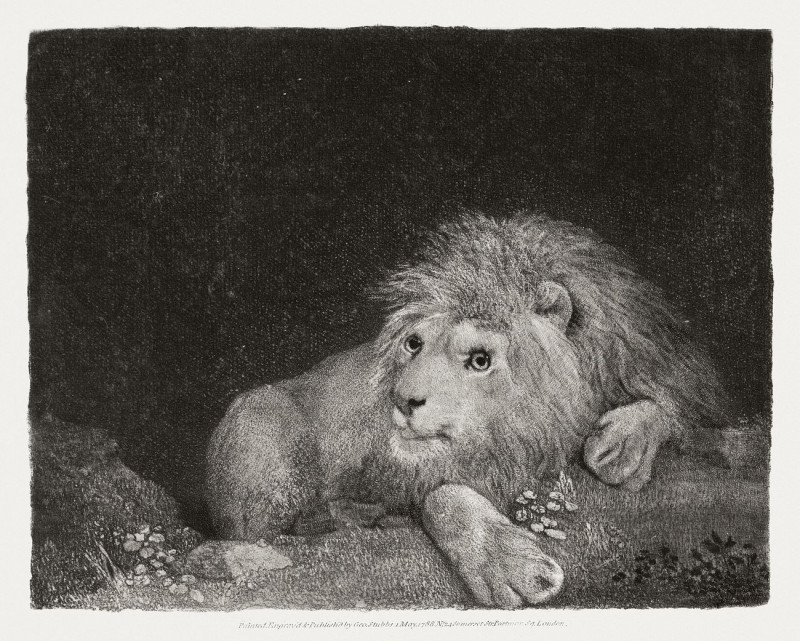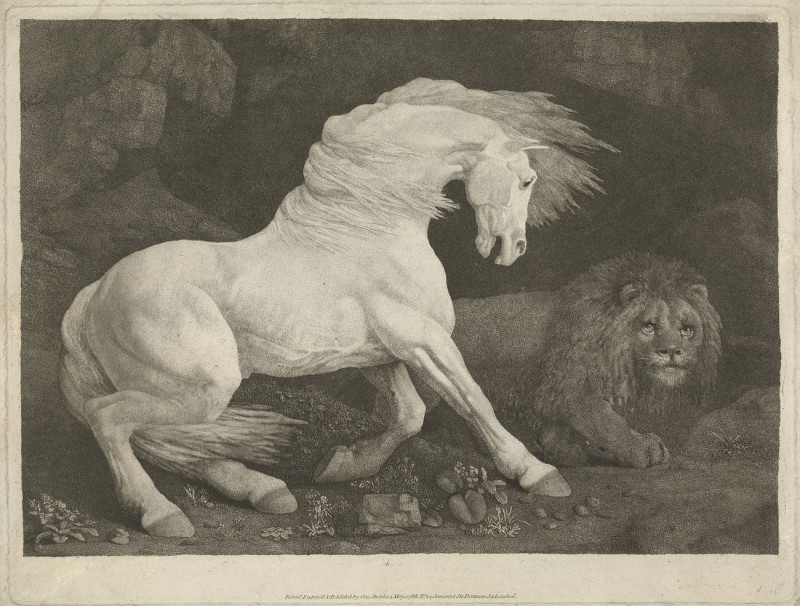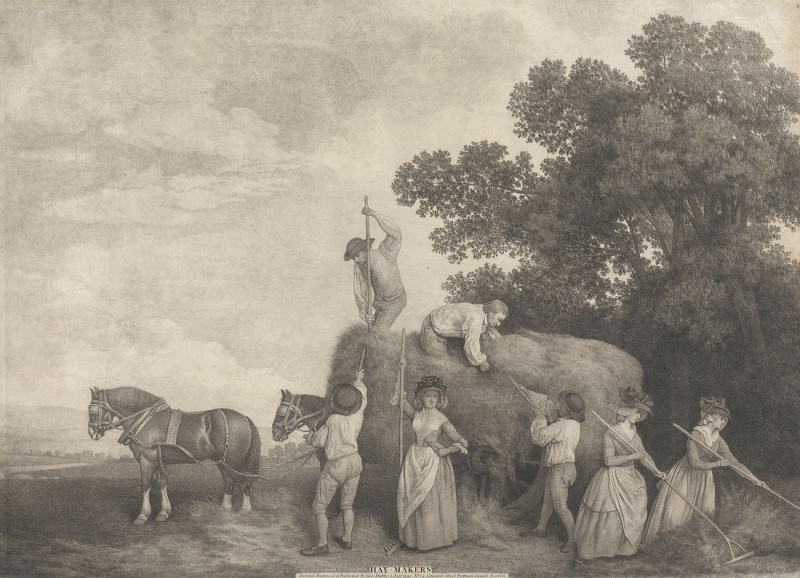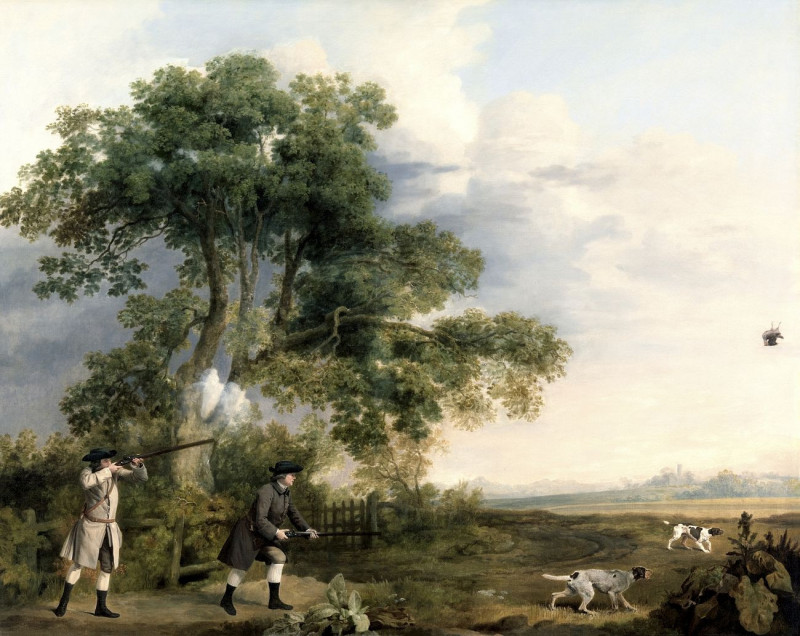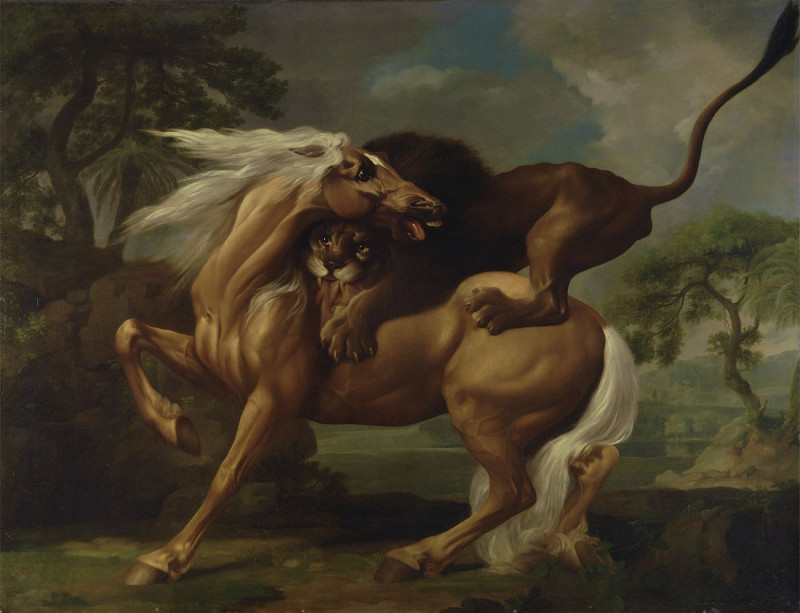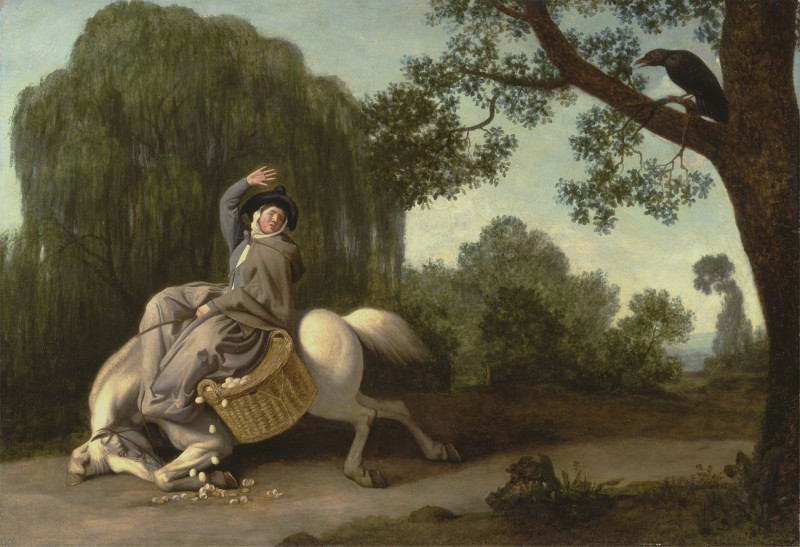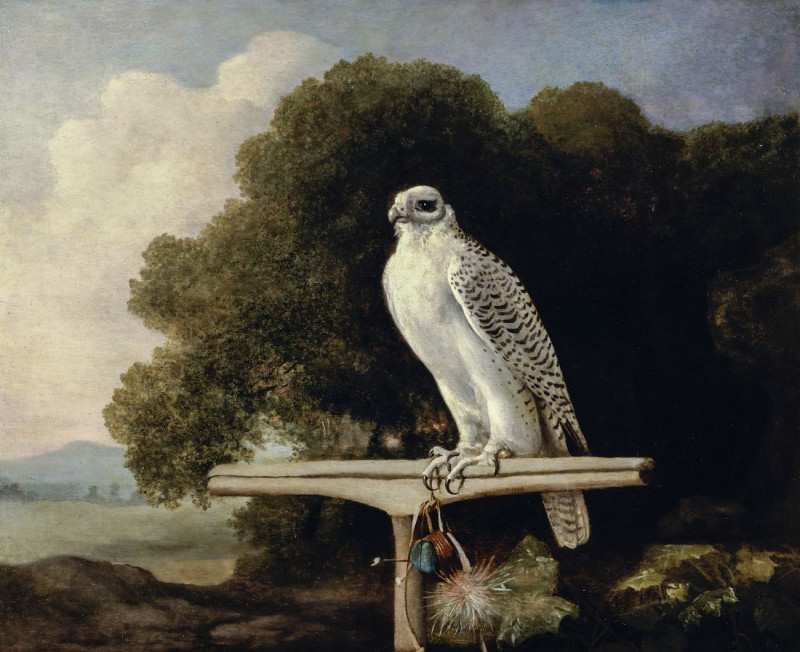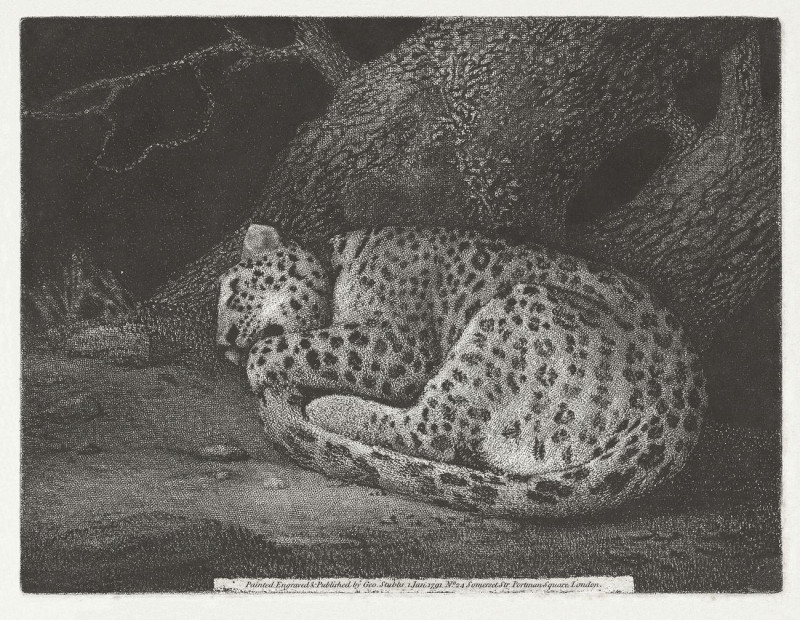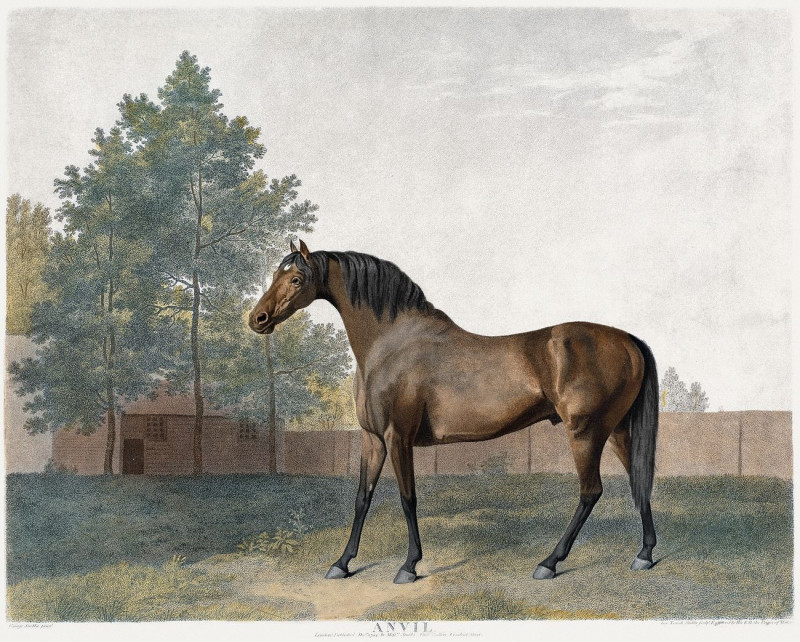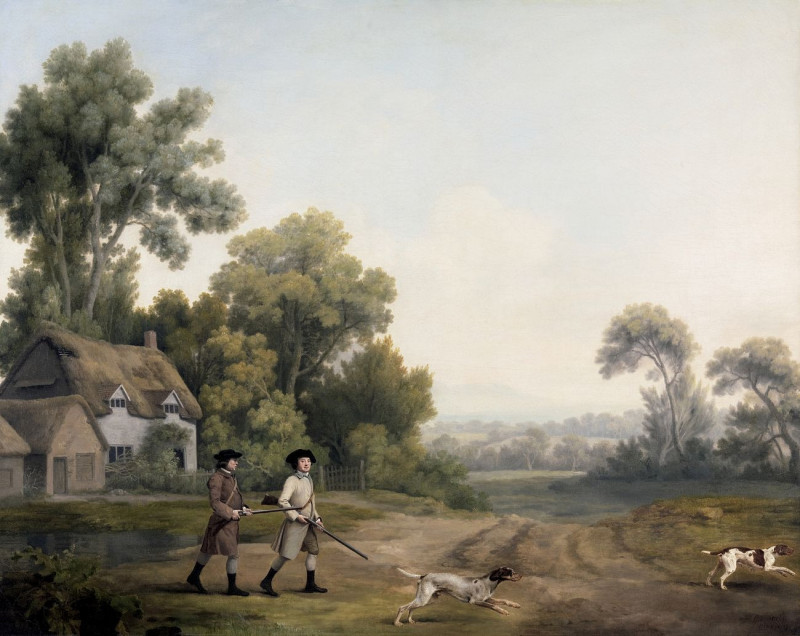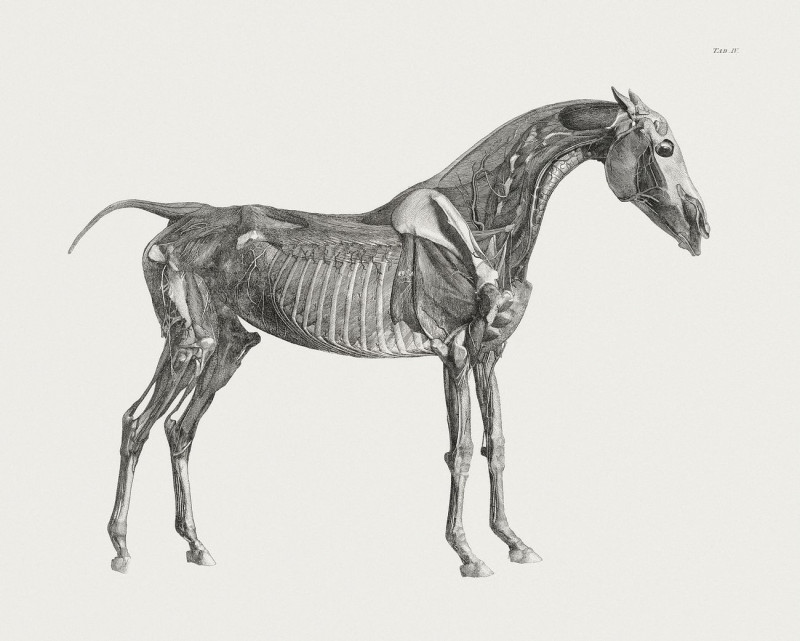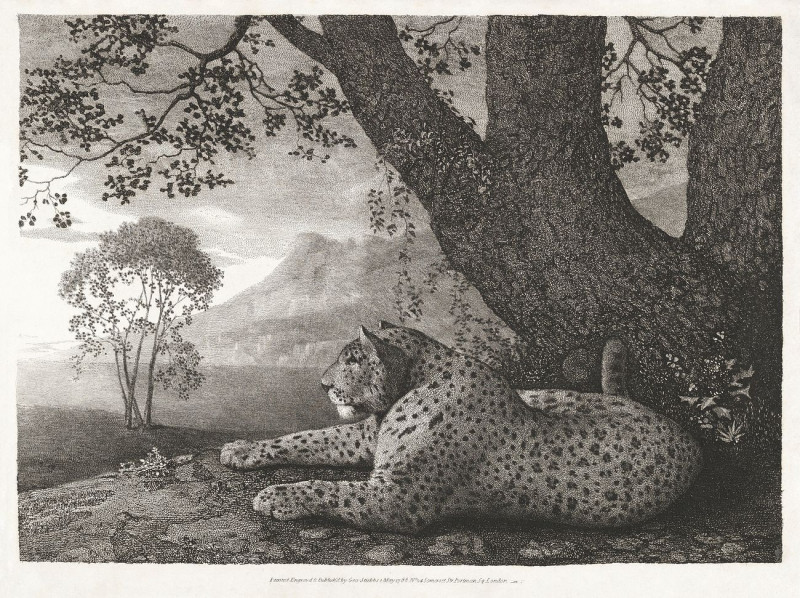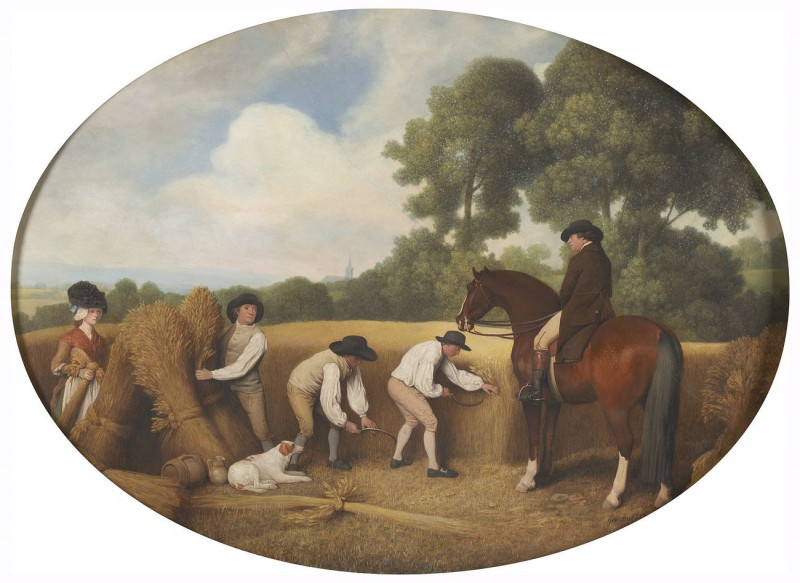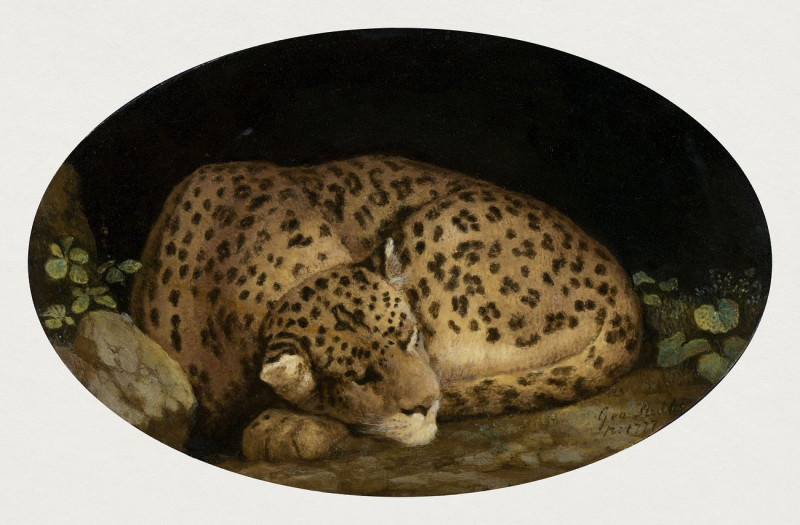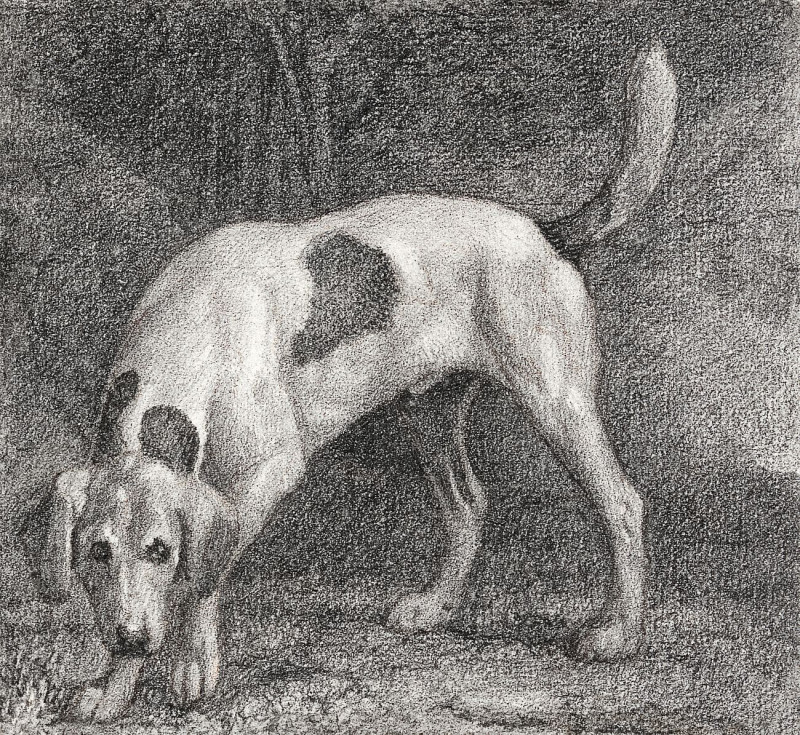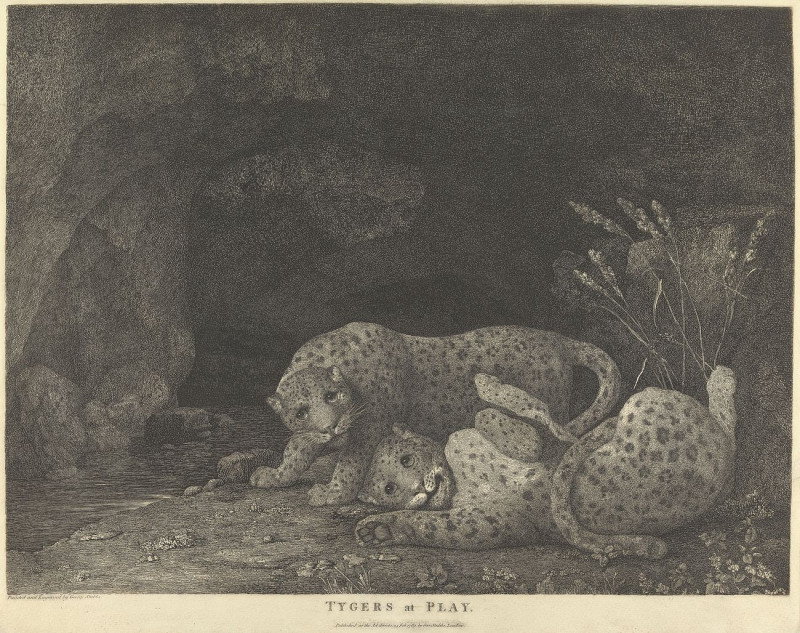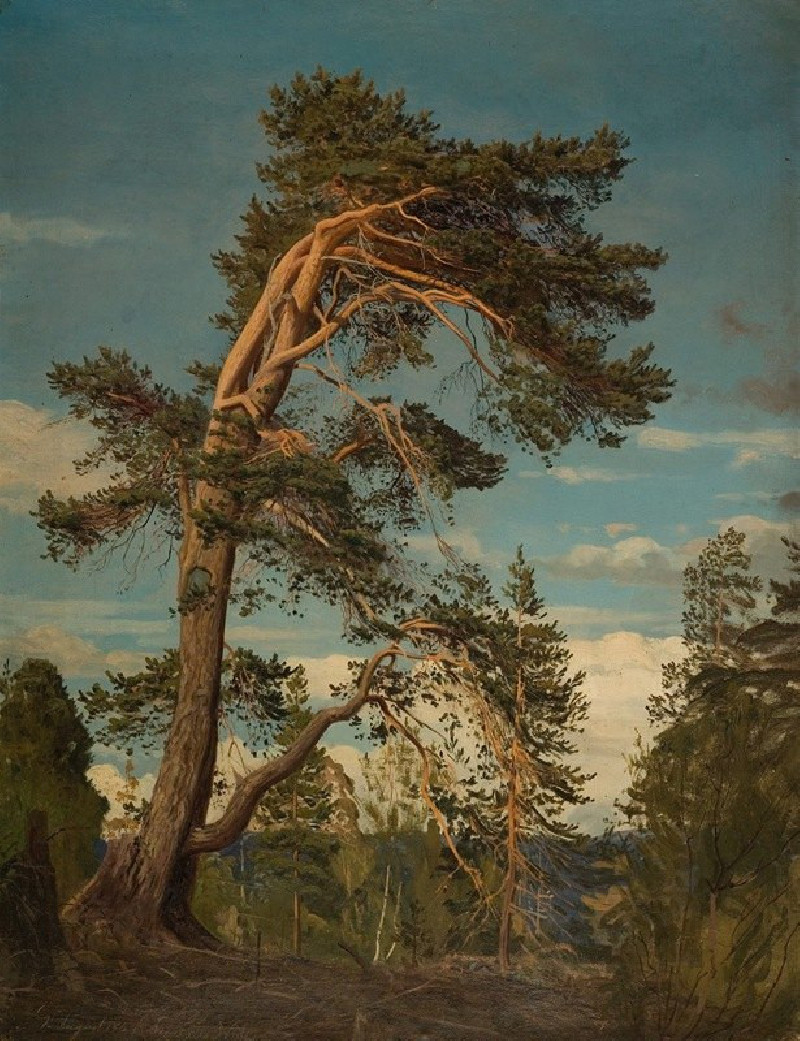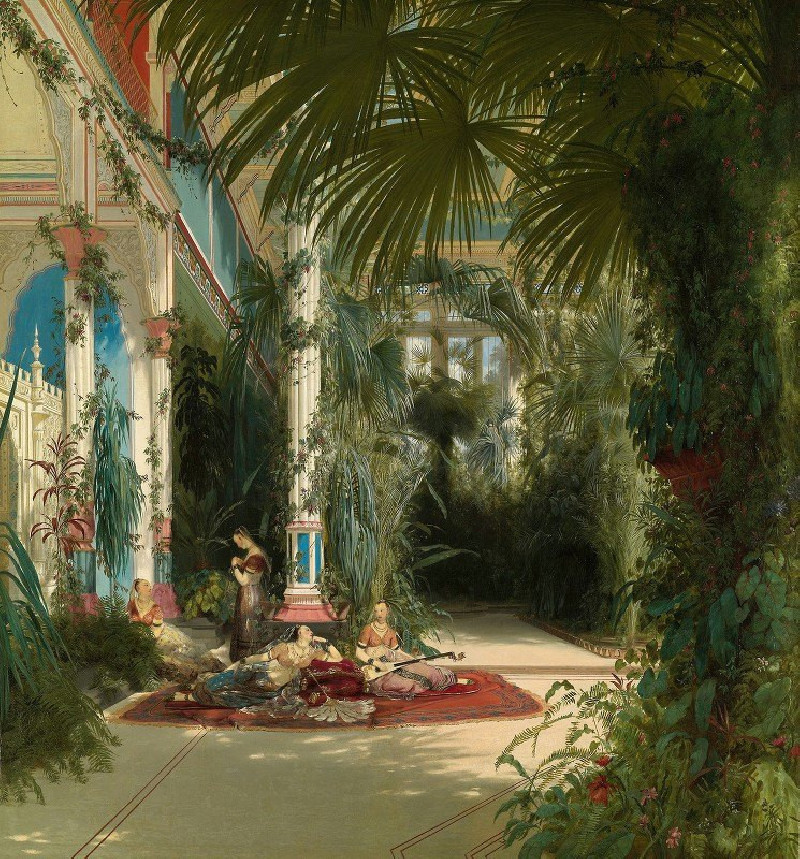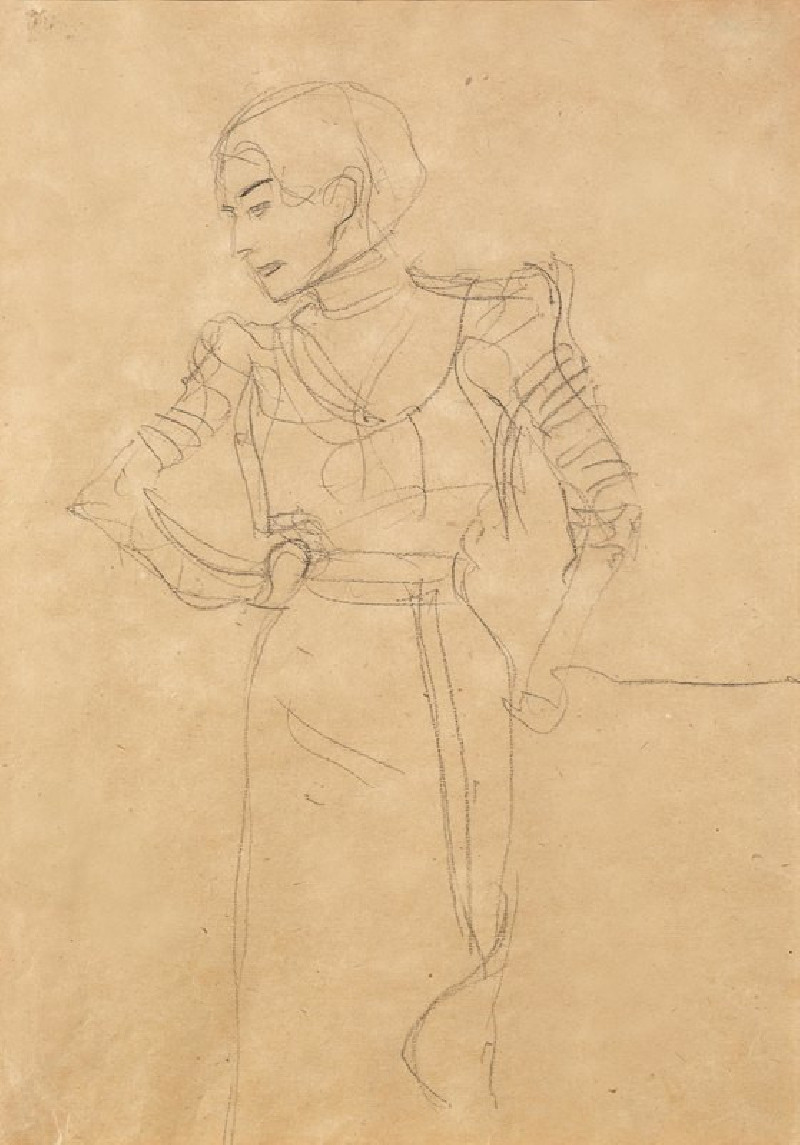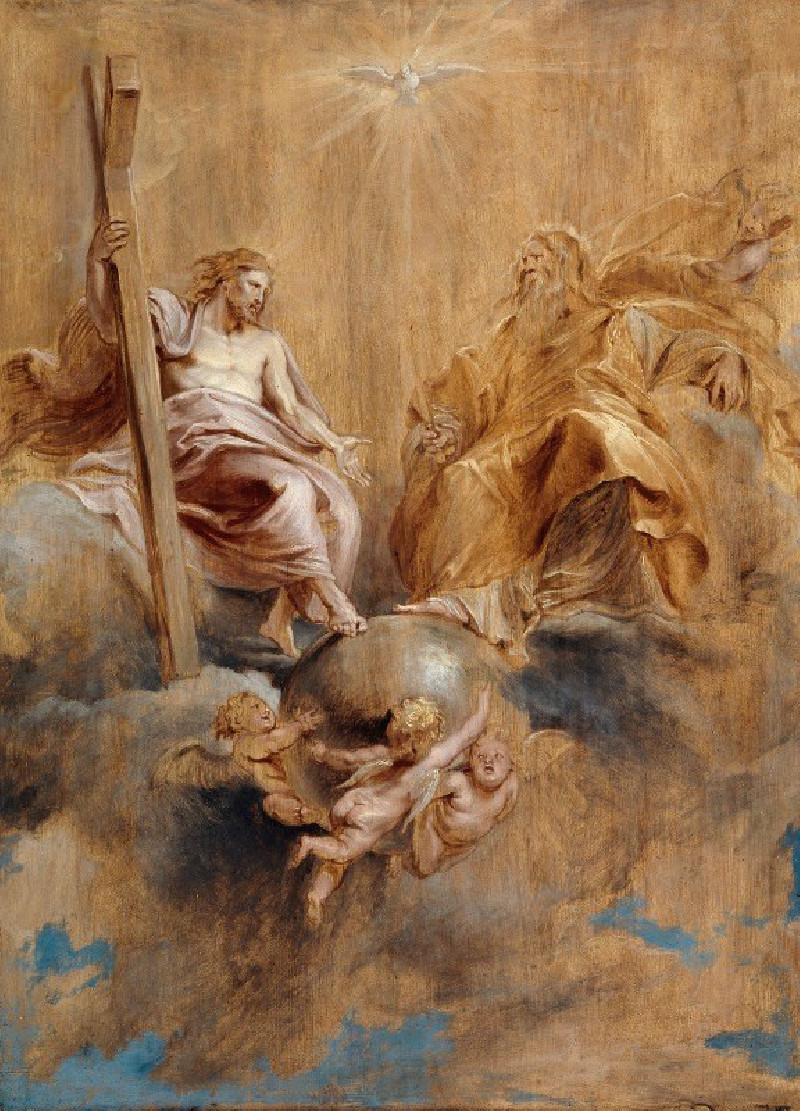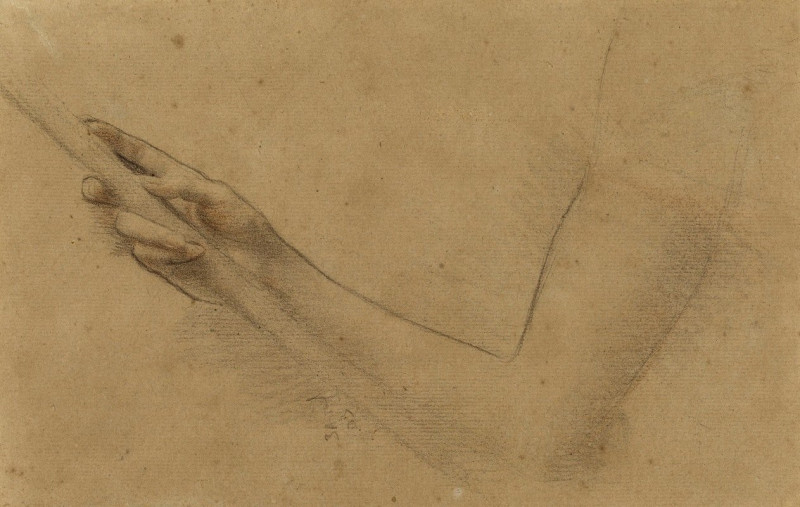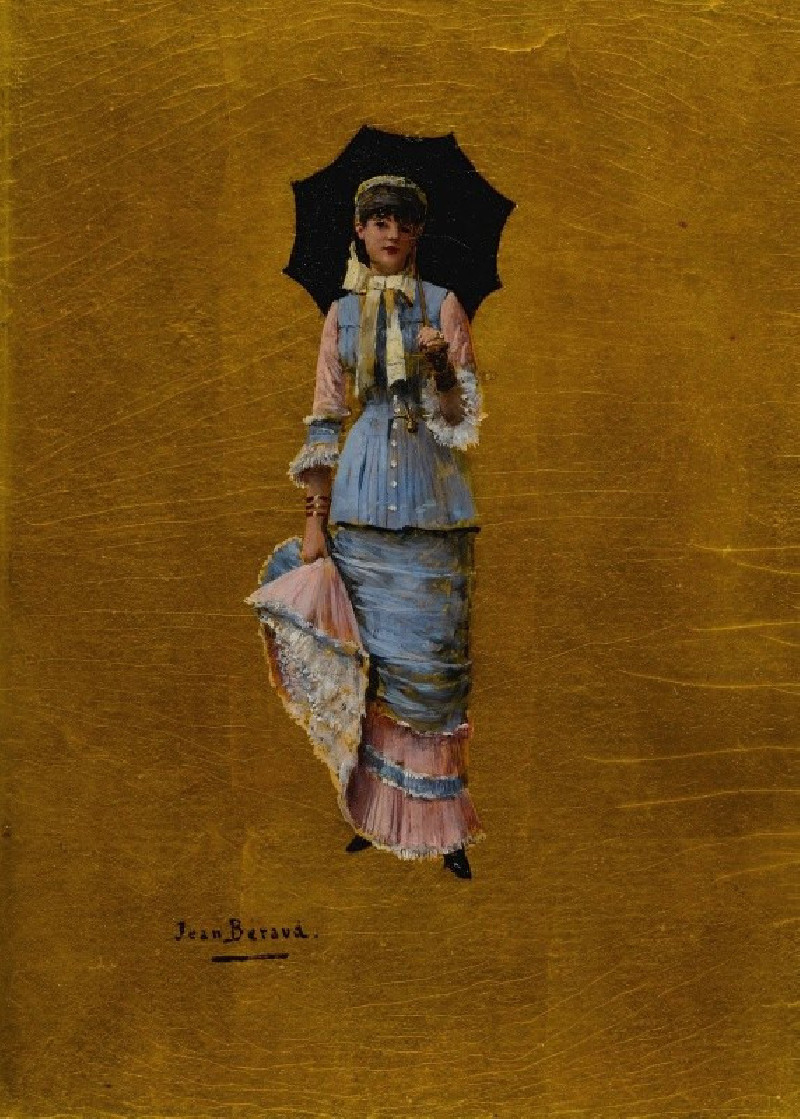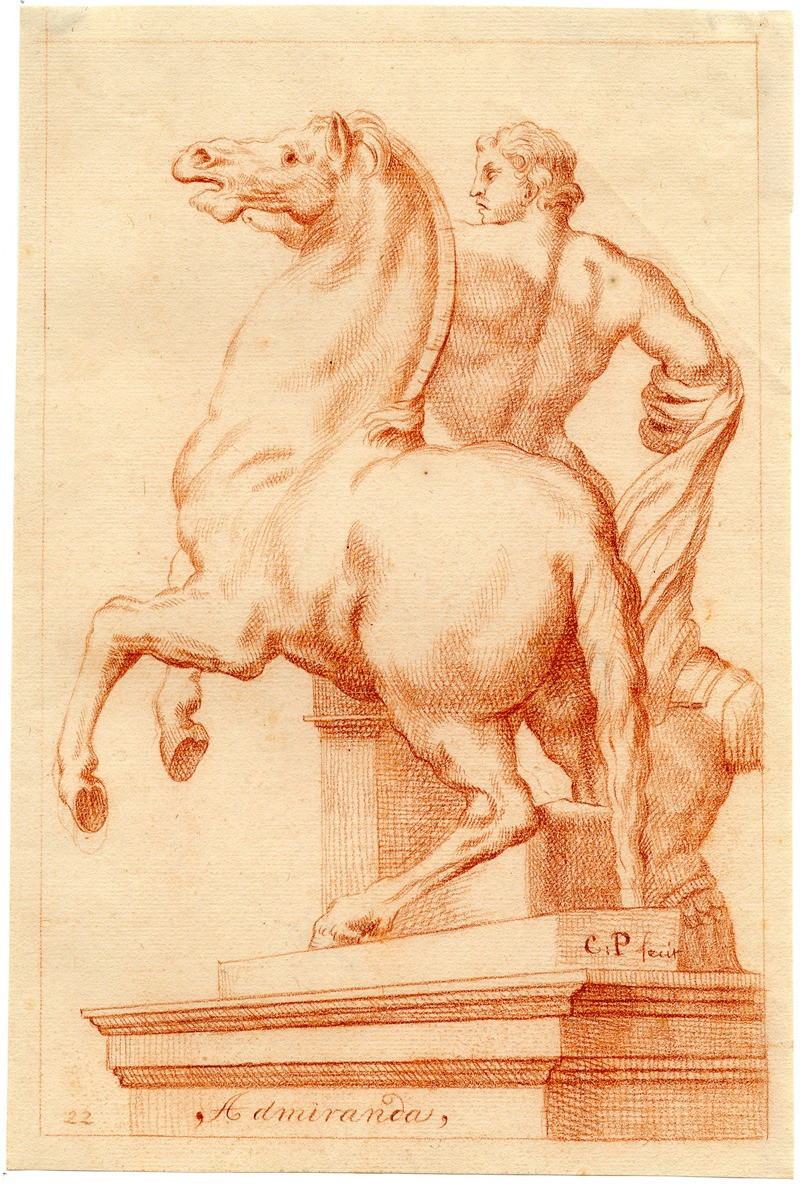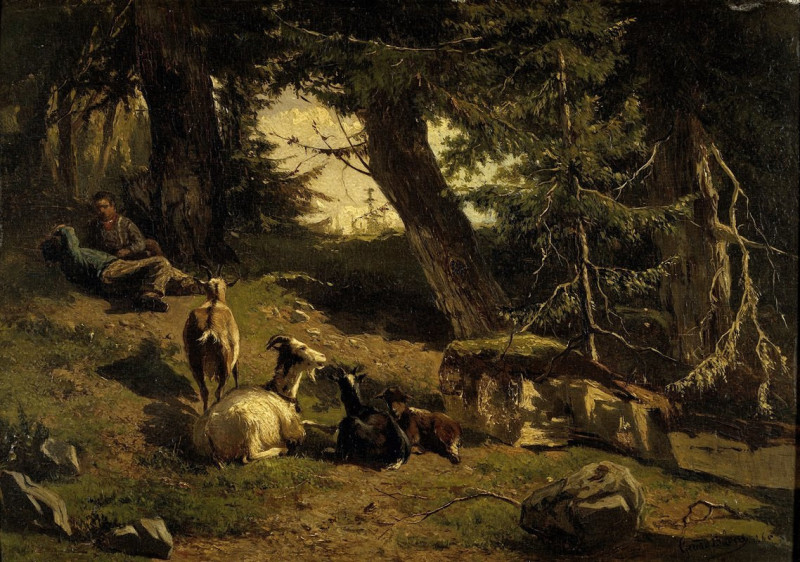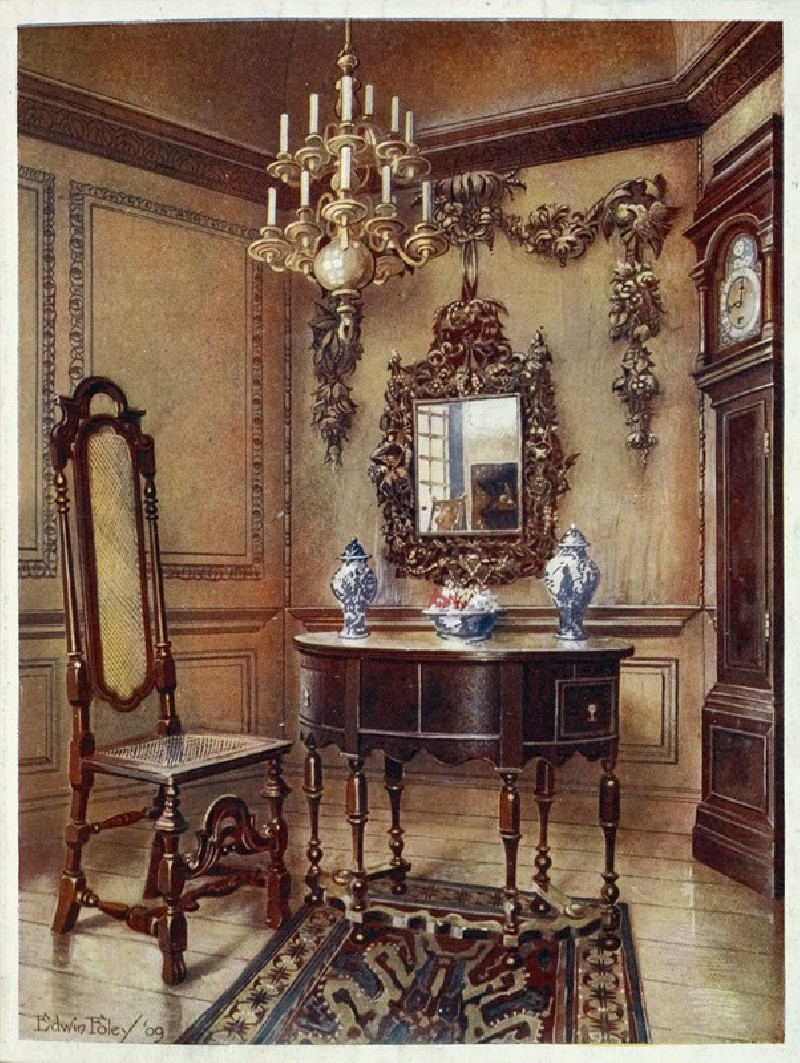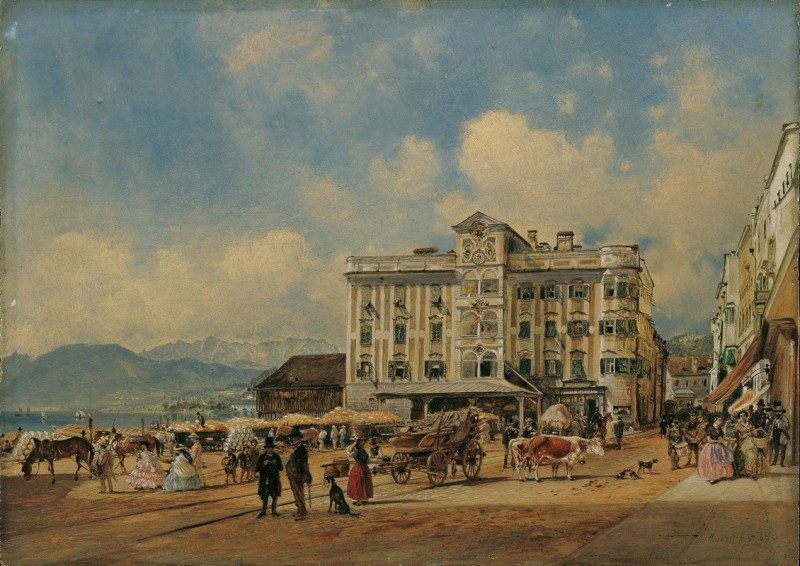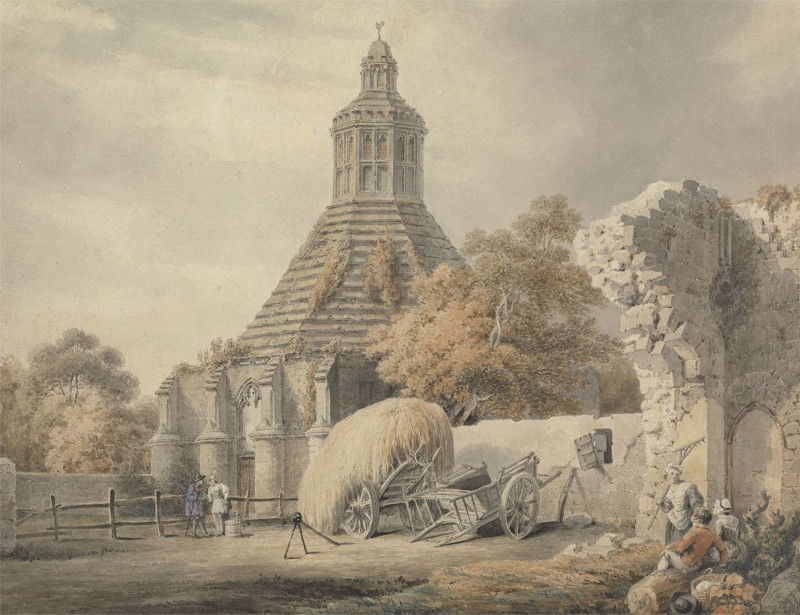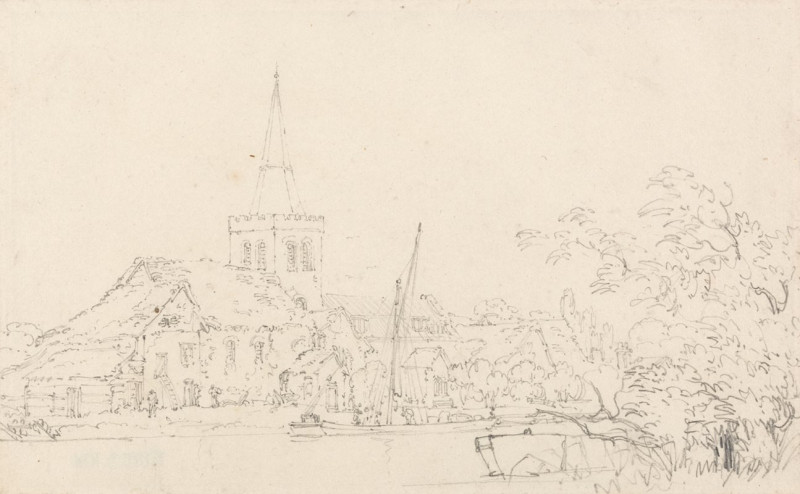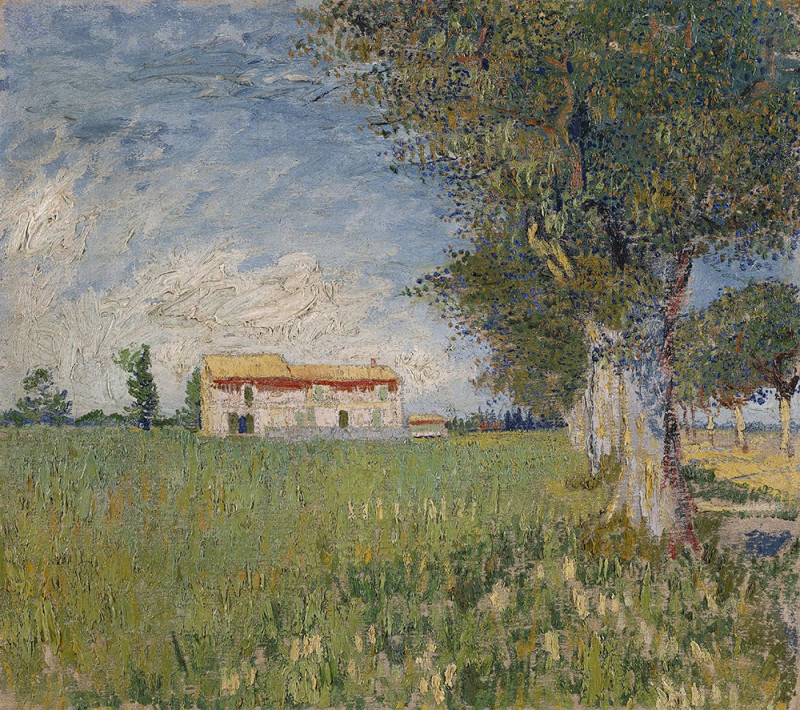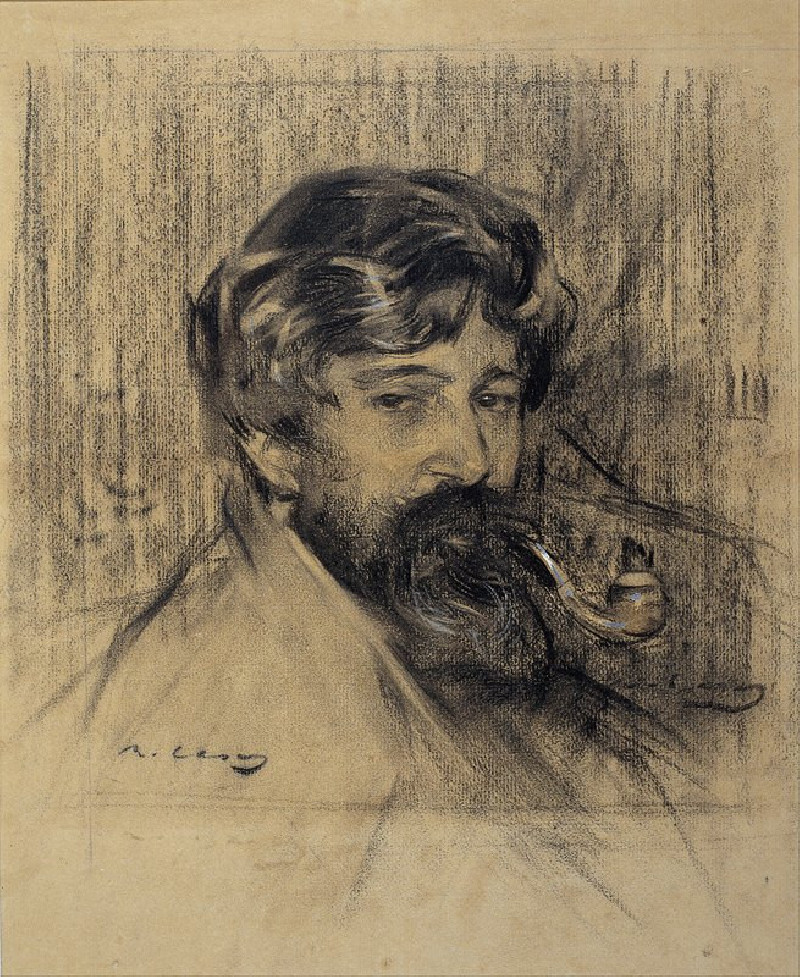Death Of The Doe
Technique: Giclée quality print
Recommended by our customers
More about this artwork
"Death of the Doe" by George Stubbs depicts a poignant scene set in a dimly lit, natural environment, likely during the early morning or evening. This painting shows a man and two dogs, one white and one brown, gathered around a doe that has been hunted down. The man, dressed in a traditional 18th-century attire with a mild, possibly sympathetic expression, kneels beside the fallen deer. His gaze seems contemplative as he touches the deer, adding a gentle, almost regretful atmosphere to the scene.The setting is a dense forest with understated, dark hues, contributing to the somber mood of the artwork. A rift in the canopy allows some light to highlight parts of the scene, enhancing the emotional and dramatic impact of the moment. To the left, obscured by the shadows, lies a body of water reflecting light, hinting at the border of a tranquil yet impassive natural world.This painting captures not only the physical acts of hunting and nature but also delves into the deeper emotional and possibly ethical dimensions of human interaction with wildlife. The artist’s skillful use of lighting, composition, and expression invites viewers to reflect on the dynamics of life, death, and the human role within nature.
Delivery
Returns
George Stubbs (25 August 1724 – 10 July 1806) was an English painter, best known for his paintings of horses. Self-trained, Stubbs learnt his skills independently from other great artists of the 18th century such as Reynolds and Gainsborough. Stubbs' output includes history paintings, but his greatest skill was in painting animals, perhaps influenced by his love and study of anatomy. His series of paintings on the theme of a lion attacking a horse are early and significant examples of the Romantic movement that emerged in the late 18th century. He enjoyed royal patronage. His painting, Whistlejacket hangs in the National Gallery, London.

